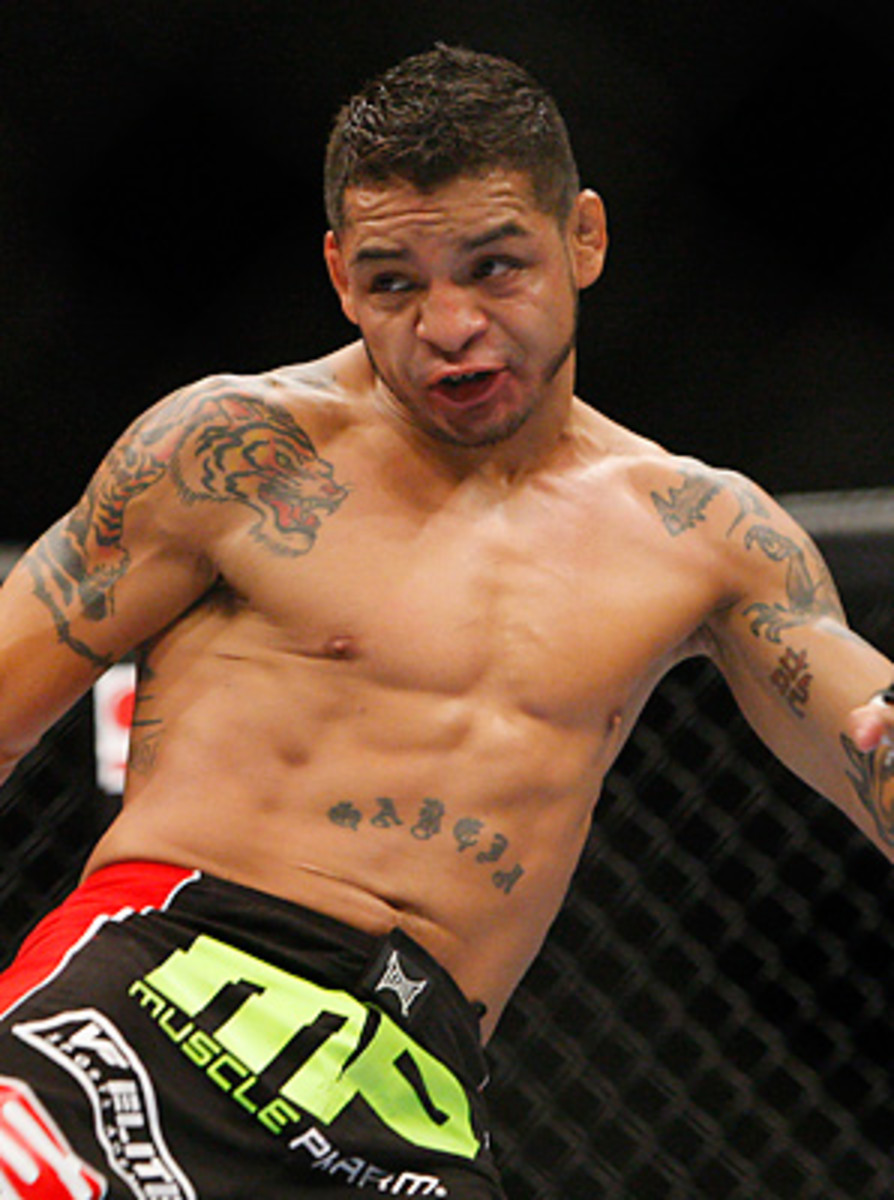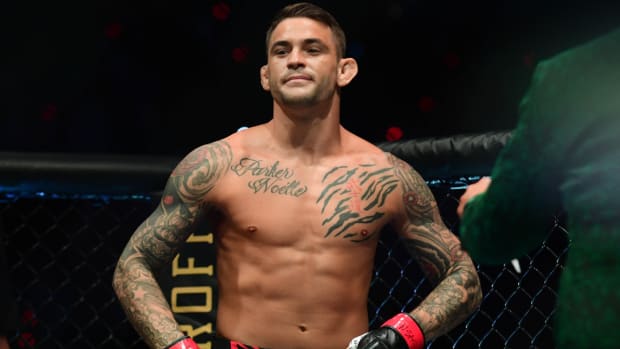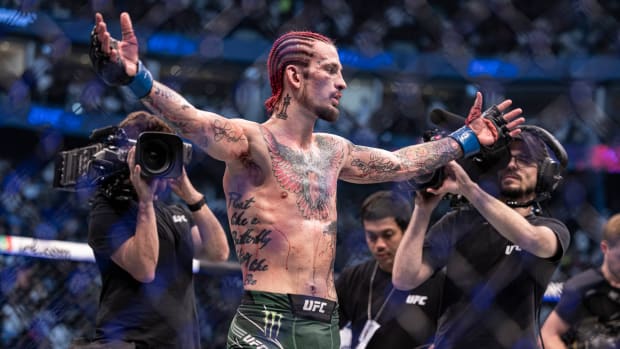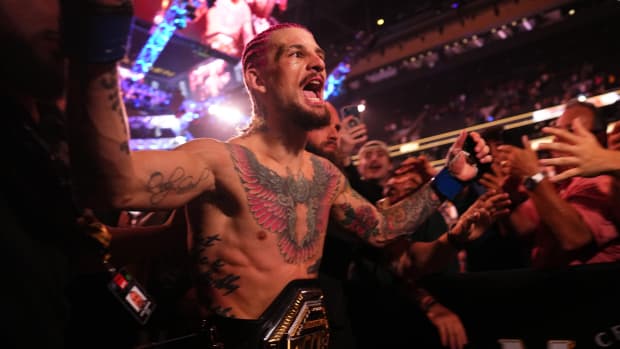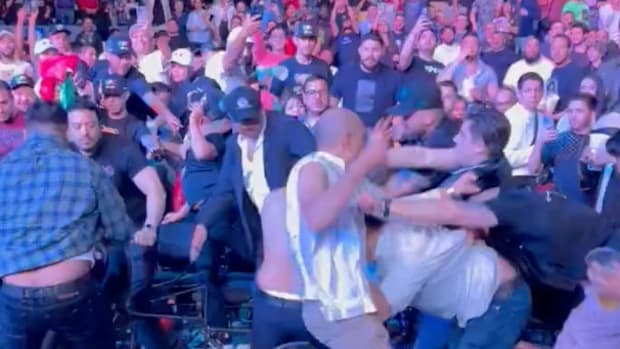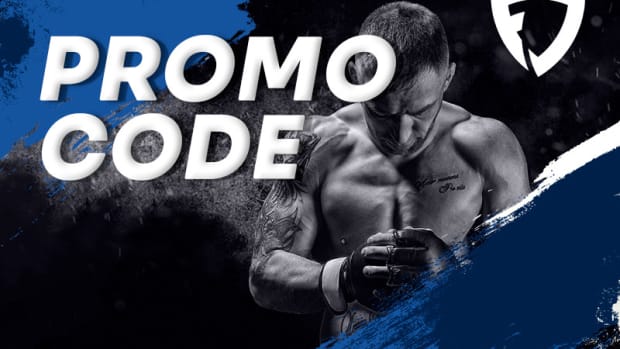Garcia determined to end losing streak at UFC 155
LAS VEGAS -- Roughly 48 hours before his make-or-break-fight, UFC featherweight Leonard Garcia is standing at the bureau of drawers in his MGM Grand hotel room, unpacking the spoils of his hours-earlier shopping trip.
"These are for my daughter," he says, unfolding a pair of size-2T True Religion jeans that look just like daddy's.
"Before the Nam fight, I bought her a pair," Garcia says as he points to a photo from his controversial win over Nam Phan on The Ultimate Fighter 12 card that happens to be laying on top of the dresser. "So today, I bought two," he says, unfurling a second pair for baby Behautti.
Garcia, a devout Christian, isn't exactly superstitious, but forgive him for doubling up on his purchases as he tries to double down on his luck ahead of Saturday's UFC 155 bout against Max Holloway. He hasn't won a fight since that December, 2010, Phan bout and has lost three consecutive bouts since, including a three-round rematch with Phan. Garcia knows his UFC career hangs by a thread not much thicker than the trademark topstitching on baby Behautti's newest duds. He also knows that saving his career isn't a matter of buying jeans but beating the pants off Holloway.
As if fighting to preserve his career wasn't challenging enough, Garcia spent most of his camp preparing to face Cody McKenzie, who pulled out with an undisclosed injury a little more than a week before Saturday's matchup. (Garcia says he doubts McKenzie's injury and loads online video posted nearly a month ago showing McKenzie jumping off a tree and into a body of water, love handles and all, seemingly out of shape). The UFC didn't simply replace Garcia's opponent, it upgraded it, sending rising star Holloway to the octagon instead. Holloway, 21 and currently the youngest fighter in the UFC, is as hot as Garcia has been cold, coming off two straight victories against Pat Schilling and Justin Lawrence.
"It's never-wracking," Garcia says of the short-notice swap. "You've geared for one guy, one style. You've eaten, slept and drank this guy's name for almost eight weeks and then all of a sudden it's not that guy. Then you catch yourself doing things that you were doing training for him even though you're now training for someone else." For several days, Garcia didn't know whom he'd be fighting.
"I truly believe [Holloway] is way more dangerous," he says. "Stylistically, for me, it's a better match up. We both have a really aggressive style standing up and that always makes for great fights for me. I know some people don't really enjoy the fact that they're probably going to get beat up a little bit, but I feed off the fact that we might be going to the hospital together after the fight."
"Situations like this," he says of his critical matchup, "bring out the best in me. Anytime my back's against the wall, I always do my best."
That Garcia would thrive with his back against the wall should come as no surprise. He was practically born -- and even almost died -- in back-against-the wall situations.
Take, for example, his birth. Not long after the 33-year-old entered the world, the Plainview, Tex. native's back wasn't literally against a wall, but up in the air so that doctors could administer steroid injections into his lungs. For the first six months of his life, his grandmother, Elena Garcia, would hold the future fighter with his back exposed so that doctors could stick him with the drugs aimed at strengthening his lungs that were ravaged by a rare childhood illness. He suffered fevers so severe that when the infant Garcia vomited, the discharge would blister his mother's skin.
Or look at the instance right after his high school graduation, when Garcia, planning to walk-on to the Texas Tech football team, came across a recently released, drugged-up, felon at a Taco Cabana restaurant not far from his home. When the man kept picking at Garcia's plate of nachos, Garcia fought back, not knowing the man had a knife. The scars from the eight knife wounds remain visible, including those on his back, where the knife tip punctured both of his lungs, causing them to collapse. But because of those childhood steroid injections, Garcia's lung tissue was thicker than the average person's, allowing him baby breaths that enabled him to live.
"Had it not been for that sickness when I was a child, I would have been dead," he says.
That Garcia's life-threatening illness as a child would, in turn, prove to be life-saving as an adult tracks with the fighter's history of flipping the harrowing into the transformative, sifting the good out of the awful. When a drunk driver killed his sister, Angelica, in a 1997 car accident, Garcia limited his own drinking. When he couldn't recover from his knife wounds quickly enough to try out for the Red Raiders football team, he gave up what he thought was his dream and found his calling -- and a dojo -- where he first discovered his fighting abilities.
He turned pro in 1999 with a win over Chris Cantrell in the United States Shoot Wrestling Federation. He collected eight wins in the Ring of Fire and World Extreme Cagefighting circuits with his unrestrained, strike-first, strategize-later approach. He received a bid to UFC 69 where his fight against Roger Huerta, a unanimous decision loss for Garcia, earned him the admiration of the UFC and his picture of his back against the cage -- of course -- landed on the cover of Sports Illustrated. The fight is a classic. He later returned to the WEC and notched wins against the likes of the well-regarded Jens Pulver. His Nam victory marked his UFC return. But in March 2011, Garcia lost in a split decision to Korean Chan Sung Jung in the 2011 Fight of the Year. The Sung Jung decision, though dubbed by UFC commentator Joe Rogan as the fight of the decade, started Garcia's losing streak.
It also exposed what might have been Garcia's biggest flaw as a fighter: his ego.
"My whole thing was, I knew I could go out there and push anybody to the limit," he says. "I just trained to do that. I've seen the frustration in my coaches whenever I would fight. I would see it because they knew how much more I could do. Whenever I would see them frustrated, I would wonder why. But after a while I realized I was overlooking all of their instruction and just going out there and being crazy, trying to put on a show. But when I would sit at home and watch my fights I'd be like, whoa, what was I doing there. Why did I do that? It took a lot of listening to get me back. I know that this fight, I'm going to come out and show my coaches that all their hard work is going to pay off."
Losing, he says, has helped change his attitude and his approach. Garcia moved away from training much with his best friend, lightweight Donald "Cowboy" Cerrone, with whom he shares a ranch in Edgewood, New Mex. "Last year, [Cerrone] made me worse. He's such an exceptional athlete, that if he sees something, he gets it. He only has to see if once. I have to see it 100 times. My pride would make me say, 'I've got it too.' I swallowed my pride and I realized I had to get in the gym. Being in the gym, back to repping."
Garcia says he's spent more time one-on-one time with coach Greg Jackson this camp than he has in his five-year tenure at the Jackson-Winkeljohn's Mixed Martial Arts center in Albuquerque. He's humbled himself not only to accept but embrace his vulnerabilities as a fighter. "What we learned through the process is that I'm not a technical guy. I'm more of the aggressive type. I don't ease my way into anything. I don't feel anything out. I just kinda go in and if it bites me I try to bite it back. That being said, we do do a lot of technical things but we do them to match my style, too."
Says Jackson-Winkeljohn coach Mike Valle. "He's got to be aggressive and cool at the same time. We're asking him to be cool, calm and collected. That's what we're asking, that's what Greg's asking."
Garcia believes he can be aggressive stylistically without becoming aggressive emotionally -- a factor in his recent defeats. The fighter traces this emotional centering not so much on losing his fights but finding his purpose.
Last November, Garcia accepted the invitation of a Plainview pastor to speak to the church's youth group. Standing before the kids, he felt their eyes upon him as he told them that the hardest thing to do is walk away from friends that become liabilities -- a lesson he'd learned the hard way. They all looked at him -- some wearing, others clutching, the Tap Out T-shirts he'd brought them. "I had never felt more accomplished until that day when all those kids were listening to me," he says. It was in that moment, during that speech, he realized his true power wasn't necessarily in beating down opponents but building up his fans. "It was a really good feeling and I know that it was God. ... I left there and wanted that feeling all the time."
From what Garcia remembers, it just might feel a lot like winning.
